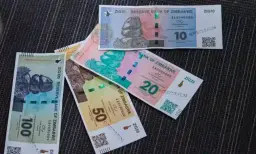Zimbabwe’s monthly consumer inflation eased significantly to 11.7% in November, from 37.2% in October – the first decrease in 4 months.
- The easing coincides with the gold backed currency – the Zimbabwean ZiG – gaining more than 10% against the US dollar in November, mirroring short term stability.
- In the late days of September, the Reserve bank of Zimbabwe devalued the ZiG by 43%, from 13.56 to 24.4 against the dollar in a bid to stabilize the volatile economy.
- In the same meeting, the central bank hiked the benchmark interest rate by 150 basis points to 35% from 20% seeking to tame the skyrocketing inflation, pushing borrowing costs to their highest since March.
In September the month on month consumer inflation stood at 5.8%, before quickening in October, as the consumer price index climbed sharply to 143.59 from 104.62 points in September.
According to data from the Zimbabwe Reserve Bank, the ZiG is currently trading at 25.33 to the dollar on the official market. On the parallel market, the ZiG traded at levels between 25-30 against the greenback.
The ZiG came under pressure in August on the back of higher prices for food imports affected by the widespread drought in the South African region triggered by El Nino.
Launched in April 2024, the ZiG, is the sixth attempt at a stable currency since the Zimbabwean dollar collapse in 2009 amid hyperinflations. The country issued a 100-trillion-dollar note in 2008, and had since switched to foreign currencies, bond notes, gold coins, and a gold backed digital currency. In 2019, it revived the ZW$ with stringent rules, before permitting the use of foreign currencies in March 2020.
The government has since faced skepticism from the local population who still transact in foreign currency following jitters of further multiple devaluations and the stained history of failed currencies.




